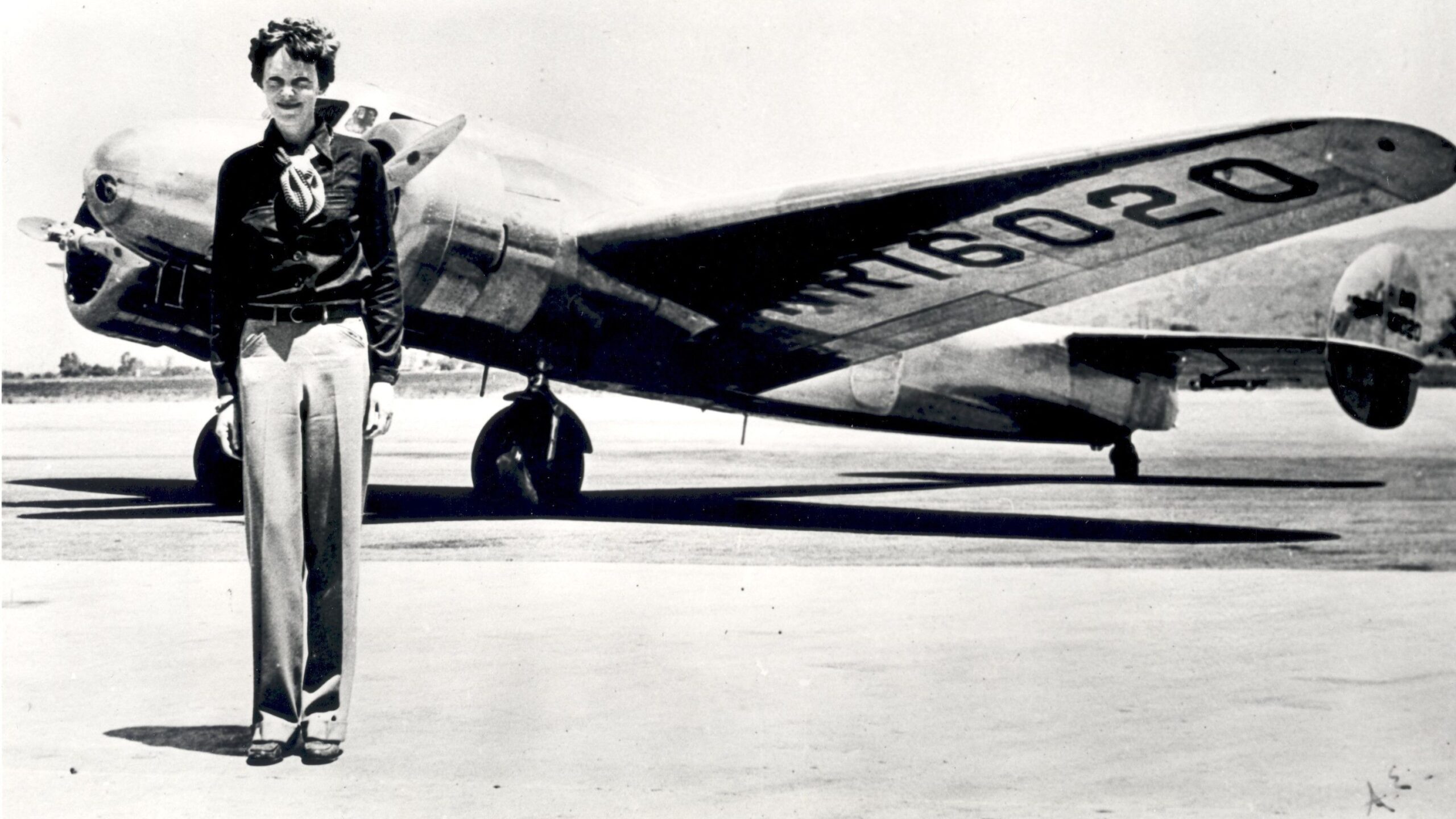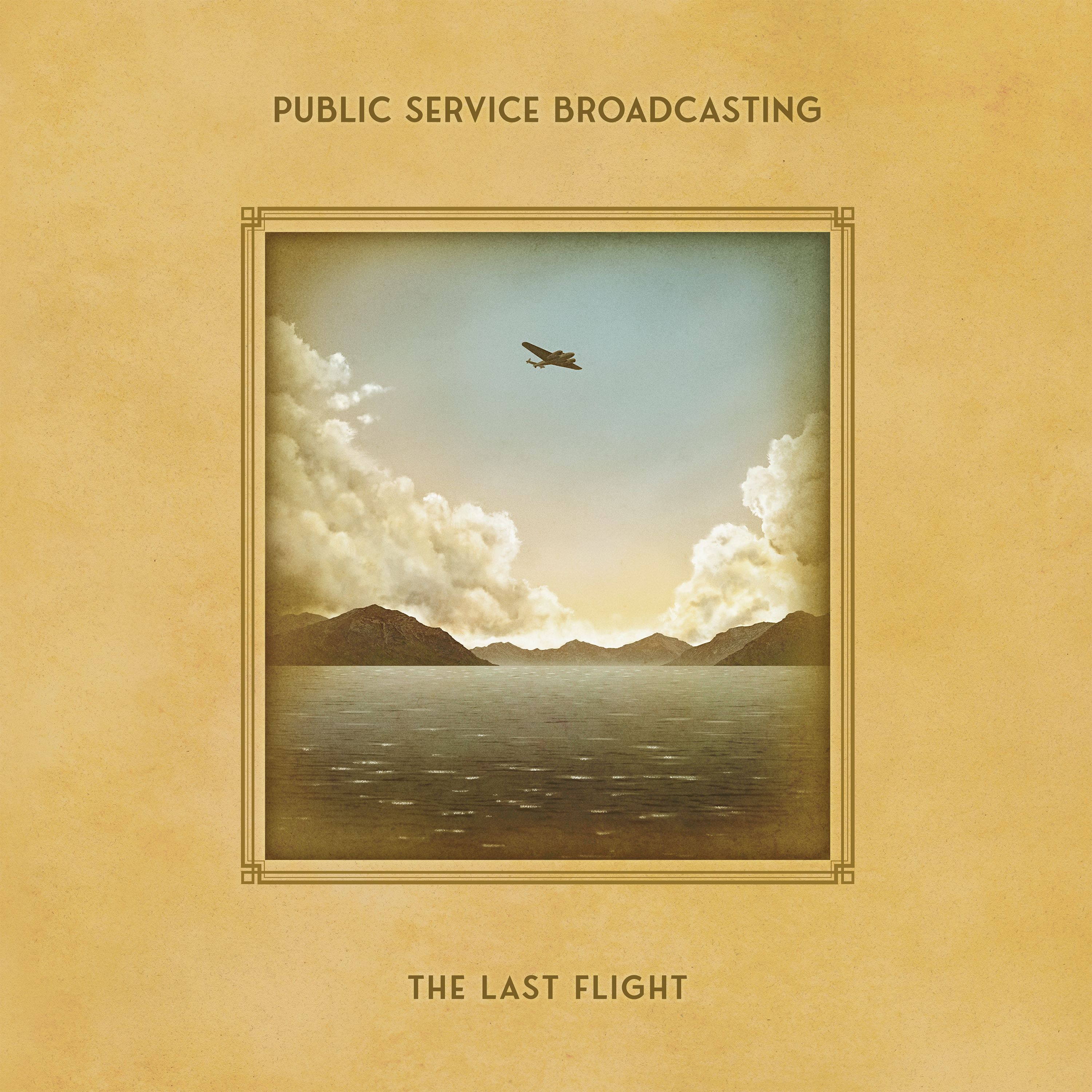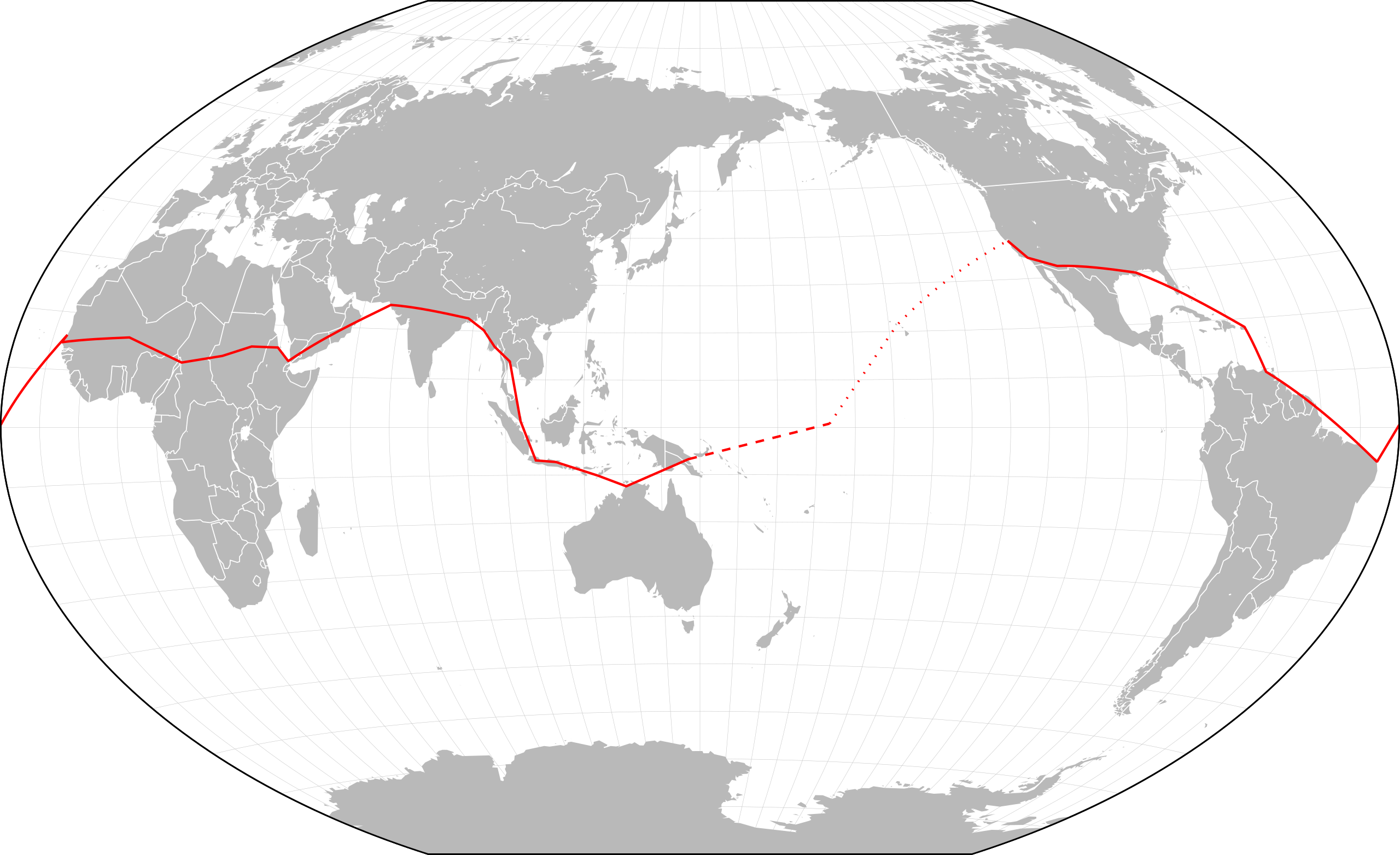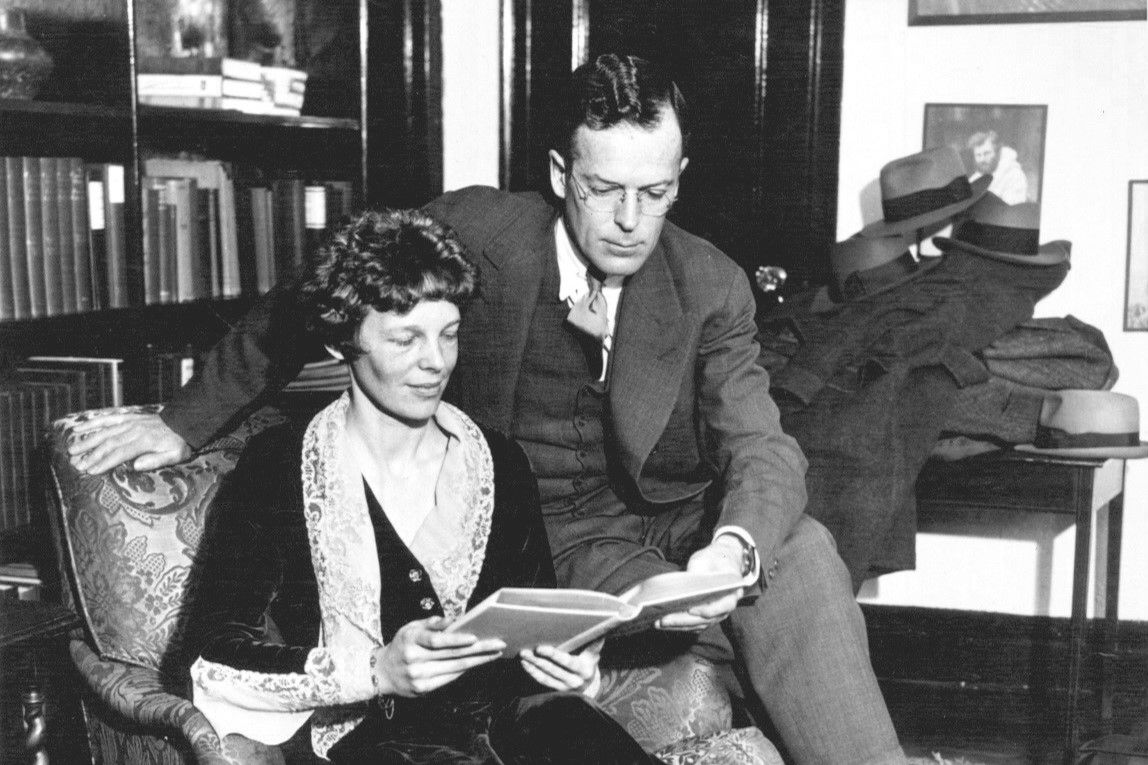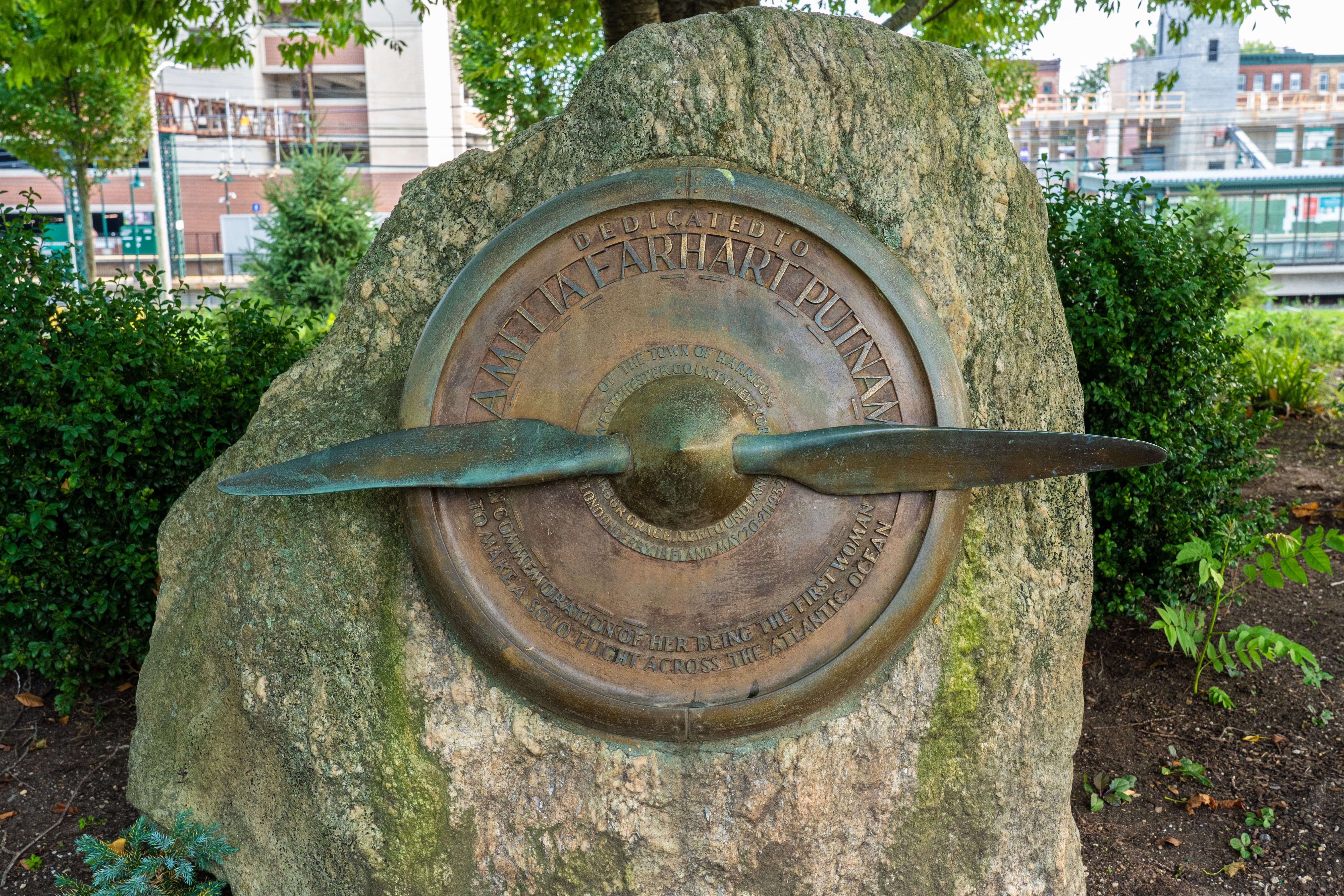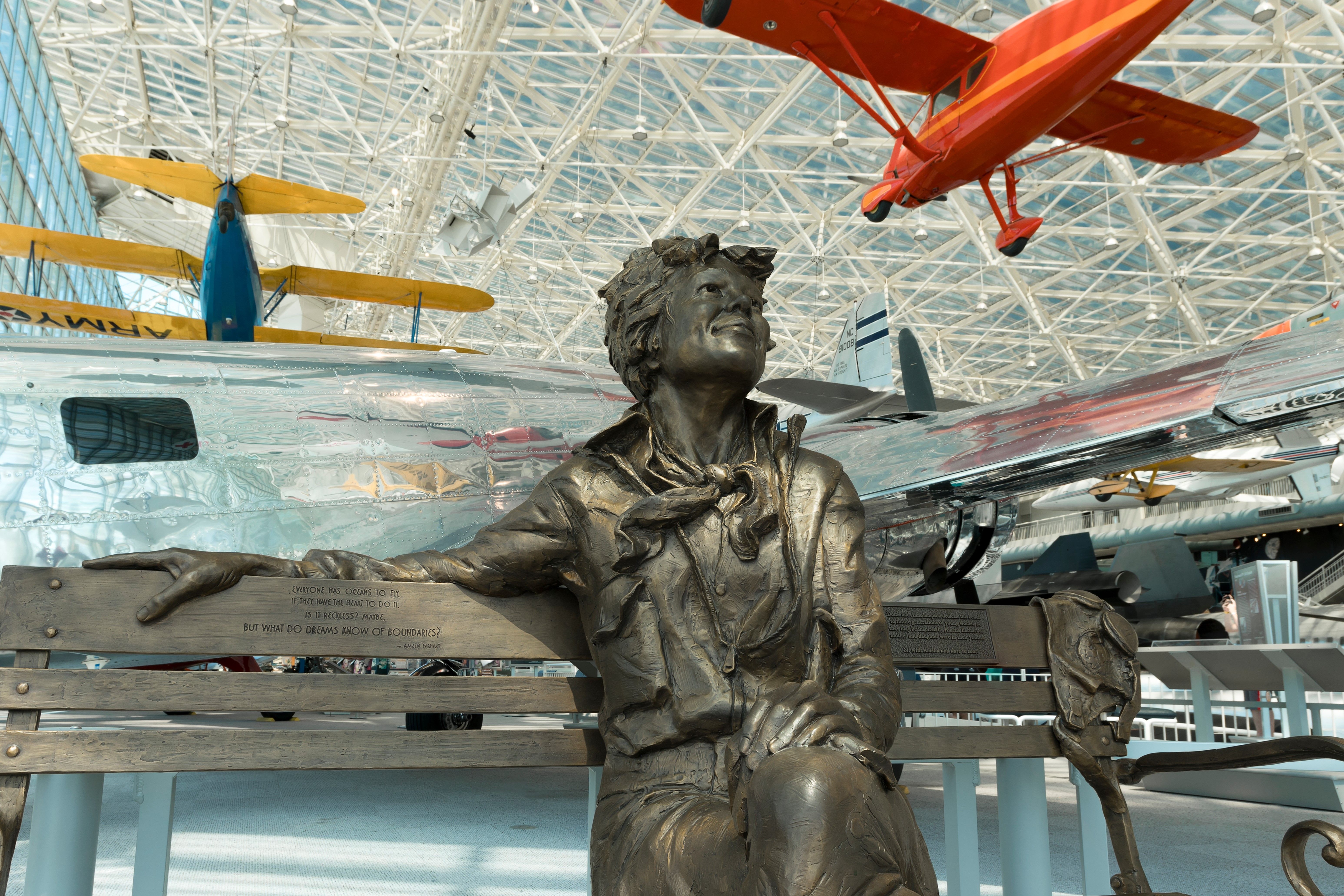In 1937, pioneering American pilot Amelia Earhart looked to make aviation history by becoming the first woman to complete an aerial circumnavigation of the globe. Flying a Lockheed Electra 10E with her navigator Fred Noonan, Earhart disappeared while airborne between Lae Airfield and Howland Island, with the whereabouts of the aircraft, as well as herself and Noonan, still unknown to this day.
87 years after the disappearance of Earhart and Noonan, their voyage has been immortalized in music by the British band Public Service Broadcasting.
Having previously explored historical subjects such as the race for space and Welsh coal mining, the group prides itself on “teaching the lessons of the past through the music of the future.” This is a track-by-track review of their latest release.
1
I Was Always Dreaming
Setting the scene
|
Duration |
Guest Vocalist |
|
3:29 |
None |
The album, released today at the same time as records from the likes of Coldplay and Orla Gartland in a manner that will make for a fascinating chart battle, starts in an ethereal fashion. Its opening track, I Was Always Dreaming, sets the scene for the listener while outlining the long-term nature of Amelia Earhart’s aerial ambition. This refrain is repeated several times in the opening bars of the song.
As this happens, the instrumentals behind the sampled vocals build, with moody bass and strings (that sound like the rumble of an engine) combining similarly to several tracks on Public Service Broadcasting’s previous album ‘Bright Magic.’ On a similar note to the first song from the band’s ‘Inform-Educate-Entertain’ album, I Was Always Dreaming features snippets of the record’s upcoming songs.
As well as looking forward to these, the track also features foreboding hints at the fate of Earhart and Noonan, such as her (voiced by Kate Graham) saying that she has “one more good flight” in her. After a brassy interlude, notes that sound like droplets falling into a larger body of water hint further at the pair’s fate in a manner that, like the whole song, sets the listener up for the album’s story in an intriguing manner.
Photo: SO Recordings
2
Towards The Dawn
Flying the other way
|
Duration |
Guest Vocalist |
|
3:07 |
None |
The start of the album’s second track blends in seamlessly from the end of the first, although, instrumentally, it is instantly a noticeably higher-tempo affair. Reminiscent of Public Service Broadcasting’s Blue Heaven or Catseyes (from the solo discography of bassist JF Abraham), the instrumentation of the song is somewhat more conventional, primarily driven by guitars, bass, synths, and drums.
Thematically, Towards The Dawn tells the story of the challenges faced by Earhart and Noonan at the start of their odyssey. Indeed, the pair had initially attempted to circumnavigate the world in a westerly direction, but crashed while taking off from Luke Field in Pearl Harbor, Hawaii. This prompted them to return to the US mainland and eventually fly their second attempt eastwards, hence the song’s title.
Photo: Alex Lake | SO Recordings
The samples used in this song are a mixture of quotations by newsreaders and Earhart herself. While the former are useful in setting the scene, it is the latter that do the most to capture the listener’s imagination, particularly as there are times when the instrumental music is paused to draw focus on them. Most spine-tingling is Earhart’s hope that “all of this will soon become routine” – indeed, it has.
3
The Fun Of It
Earhart’s tongue-in-cheek response to an often-asked question
|
Duration |
Guest Vocalist |
|
3:37 |
Andreya Casablanca |
The first contribution of guest vocals on The Last Flight comes from German singer Andreya Casablanca, with whom Public Service Broadcasting collaborated on ‘Blue Heaven’ from their 2021 album Bright Magic. The song sets out to answer a question that was frequently posed to Earhart, namely why she would risk her life with the various aviation endeavors that helped make her name.
As a sample used at the start of the track note, Earhart explains that “my answer is always the same. I do it because I want to. I do it for the fun of it.” The last line of her answer gives this song its name in a delightfully tongue-in-cheek fashion while paralleling Public Service Broadcasting’s 2013 song ‘Everest,’ which features the line: “Why should a man climb Everest? Because it is there.“
The light-hearted and joyful nature of Earhart’s response is reflected in the instrumentals used in ‘The Fun Of It,’ which begins with a jangly guitar riff backed by off-beat drumming and ethereal glockenspiel-style notes. Casablanca’s vocals carry Earhart’s sentiments, which are interspersed by historical samples before a big thrashy ending as Public Service Broadcasting’s trademark guitars go into overdrive.
4
The South Atlantic
A perfect encapsulation of the peacefulness of flight
|
Duration |
Guest Vocalist |
|
4:00 |
Kate Stables from This Is the Kit |
As exciting as any long-distance journey is, there is always time for a moment of peaceful reflection while flying at cruising altitude. These sentiments are evidenced in the beautifully minimalistic ‘The South Atlantic,’ on which Public Service Broadcasting worked with British folk rock singer Kate Stables from This Is The Kit for guest vocals. Unlike with Casablanca, this was the pair’s first collaboration.
The song is bookended by foreign-language archive samples depicting Earhart and Noonan’s departure from Natal, Brazil and subsequent arrival in Saint Louis, Senegal. This 1,727 NM (3,198.4 km) flight was the longest completed leg of the pair’s journey, and took the pair across, as the title suggests, the South Atlantic Ocean, and the song wistfully reflects on the emotions and challenges faced en route.
5
Electra
A special song for a special aircraft
|
Duration |
Guest Vocalist |
|
3:30 |
EERA and Hannah Peel |
While The Last Flight tells the human story of Earhart and Noonan’s circumnavigation, it would be remiss not to reflect on the aircraft used. Public Service Broadcasting do this in the middle of the album with ‘Electra,’ which pays tribute to the pair’s Lockheed Electra in the band’s trademark style, utilizing historical samples to tell its story against a backdrop of electronic instrumentals.
The samples used highlight the majesty of the Electra on a technical and emotional level. Indeed, right from the off, the factual “The first all-metal surface design. The cruising speed of over 200 miles-an-hour. Two 550-horsepower engines” gives way to “I could write poetry about this plane” and “How marvelous is a machine and the mind that made it.” EERA and Hannah Peel vocalize the chorus.
With the historical samples driven by incisive guitar riffs and complex drum patterns interspersed with synth sections, ‘Electra’ marked a stunning return to form for Public Service Broadcasting, and, as a piece of work, is instantly recognizable as theirs. For careful listeners, the song, which was the album’s first single, features riffs and samples from previous records, further delighting long-time fans.
6
Arabian Flight
“The lure of flying is the lure of beauty”
|
Duration |
Guest Vocalist |
|
4:45 |
None |
As the song’s name suggests, Arabian Flight charts Earhart’s reflections during the section of her flight that took them along the southeastern edge of the Arabian peninsula. This was the pair’s most challenging stretch thus far, with the spartan desert offering little in the way of distinguishable landscape or notable landmarks, as noted in the work of French writer and pilot Antoine de Saint-Exupéry.
Musically speaking, the instrumentation builds from exotic percussion to a more conventional makeup of drums and guitars, with string and piano joining the party as the song progresses. The cadence is similar to tracks from Public Service Broadcasting’s ‘White Star Liner’ EP, which tells the story of a similar doomed journey that began excitingly and majestically in the form of the Titanic ship.
When Earhart and Noonan weren’t struggling to navigate around inhospitable territories in the region where flying was prohibited, the samples used in Arabian Flight suggest that they had some time to reflect on the beauty of flight. Earhart notes that “the greatest joy of flying is the magnificence of the view,” a sentiment that resonates now as it did then, particularly against a beautiful musical backdrop.
7
Monsoons
Difficult conditions for even the most accomplished pilot
|
Duration |
Guest Vocalist |
|
3:33 |
None |
The leg along the Arabian peninsula was part of a non-stop flight from Assab, Eritrea to Karachi, Pakistan, after which Earhart and Noonan were faced with the challenge of flying across the Indian subcontinent and southeast Asia during monsoon season. This track charts the difficulties of doing so, with Earhart noting that “if this cockpit springs a leak, we’ll drown out here” to show the situation’s severity.
Musically, Monsoons represents an exciting move towards a more classic rock sound, reminiscent of some of the more moody and even violent songs from Public Service Broadcasting’s ‘Every Valley’ album. The combination of layered, thrashy guitars and sharp drums illustrate the turbulent nature of this leg of Earhart and Noonan’s journey, while providing the listener with an audio treat like no other.
8
A Different Kind Of Love
An unknowing goodbye
|
Duration |
Guest Vocalist |
|
4:37 |
EERA |
Much like the opening track of ‘The Last Flight,’ A Different Kind Of Love begins instrumentally, in a slow and ethereal manner. Before the guest vocals of EERA beautifully meander into the listener’s ears, we first hear a phone conversation between Earhart and her husband, George Putnam, which she poignantly concludes with the line, “I’ll cable you an estimate when we arrive at Howland.”
Instrumentally, the ethereal synths give way to a more conventional sound that heralds the arrival of EERA’s guest vocals. However, the song marks a notable step back in terms of cadence and tempo, with its slower nature rendering it reminiscent of the song Gib mir das Licht (Give Me The Light), on which Public Service Broadcasting also collaborated with EERA as part of the ‘Bright Magic’ album.
Given the optimism that has been prevalent up until this point, there is a marked poignance to A Different Kind Of Love, even regardless of the fate that was to befall Earhart. Indeed, the lyrics of the song reflect an understanding from Putnam that she needs a degree of independence to be able to flourish even at the expense of their relationship, which stops the listener in their tracks on a human level.
9
Howland
Beautiful and bittersweet
|
Duration |
Guest Vocalist |
|
8:42 |
None |
Having traversed the Indian subcontinent and southeast Asia, Earhart and Noonan continued eastwards via Darwin, Australia before arriving in Lae, Papua New Guinea. From here, the pair’s next leg was set to take them to Howland Island in the Pacific Ocean, and would have been their longest yet, at over 2,200 miles (3,540 km). However, they never arrived, and their disappearance remains a mystery.
Instrumentally, Howland once again starts with an ethereal gentleness, with synths and xylophones bouncing around the listener’s ears before being joined by a layered string section. Earhart’s audio samples are quieter and slightly distorted, as they would have sounded to those on the other end of her radio. Despite this, there is an unrecognizable degree of panic in her previously calm voice.
As these fade out amid a backdrop of synths and strings, they are replaced with samples of male voices from the USCGC Itasca, a ship providing navigational assistance. These voices ask Earhart for acknowledgment of their signal, but as her disappearance becomes evident, they eventually cease.
Photo: Rosemarie Mosteller | Shutterstock
As the song winds down and the instrumentals drop, breath-like strings give way to Earhart reading excerpts of Henry Wadsworth Longfellow’s poem The Tide Rises, The Tide Falls, bringing the track and album to a poignant end. After these cease, the song continues, and a minute of silence gives way to recordings of waves and sea birds, hinting at the peaceful anonymity of their resting place. “We, as listeners, make it to the island, even if she didn’t,” concludes PSB guitarist J. Willgoose Esq.
Conclusion
Much like the failed circumnavigation attempt of Earhart and Noonan, ‘The Last Flight’ by Public Service Broadcasting is an album that ends all too quickly. Those listening to it in full, as concept albums such as this should be, are swept along by the excitement and courage of the pair’s aerial escapades, leaving the listener desperate for another song or two and the closure of a full circumnavigation.
Photo: Serge Yatunin | Shutterstock
Of course, this sadly wasn’t the case when it came to the real attempt, and their disappearance, as much as the flight itself, has catalyzed intrigue amongst generations of avgeeks, historians, and the general public. The tragic story of Earhart and Noonan is one to which Public Service Broadcasting has done tremendously dignified justice, with a musically diverse and impressive album that marks their best work since 2015’s The Race for Space. For that, I take my hat off to them.
With thanks to SO Recordings.
